Three illustrators Anna, Julia, and another Anna, embarked on creating their case after completing one of the illustrator profession modules at Skillbox. One day, during a discussion on project themes, they came up with the idea of exploring the illustrative language of three different countries: Russia, Japan, and Brazil. They were inspired by the diversity of cultures, traditions, and landmarks in each of these amazing countries.

Each of the illustrators began to immerse themselves deeply in the study of their chosen country. They conducted research, gathered materials to better understand the nuances of local traditions. Throughout this process, they exchanged experiences and inspired each other with new ideas.

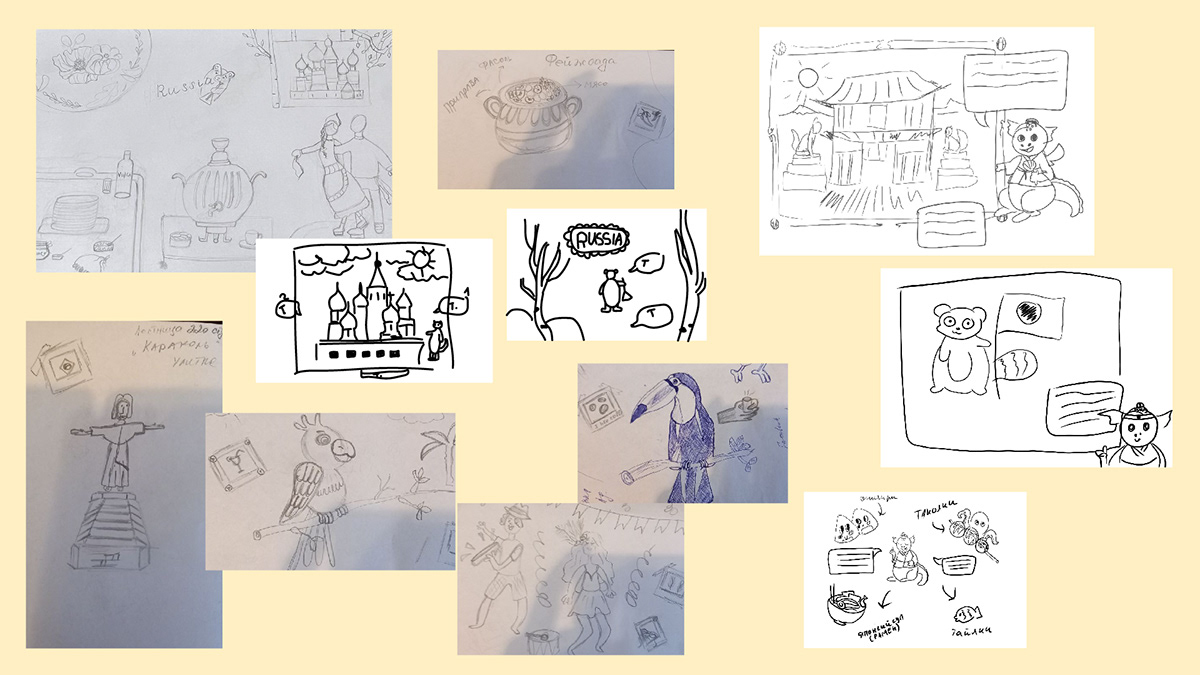
Collective creativity blossomed through the exchange of ideas and reactions to their works. They used various techniques and styles, emphasizing their individuality in each illustration. Mutual support and constructive criticism became key factors contributing to the growth of each artist.

Anna, passionate about her homeland, chose Russia. Her goal was to showcase the beauty of cathedrals, national dishes, and the richness of cultural heritage through illustrations.
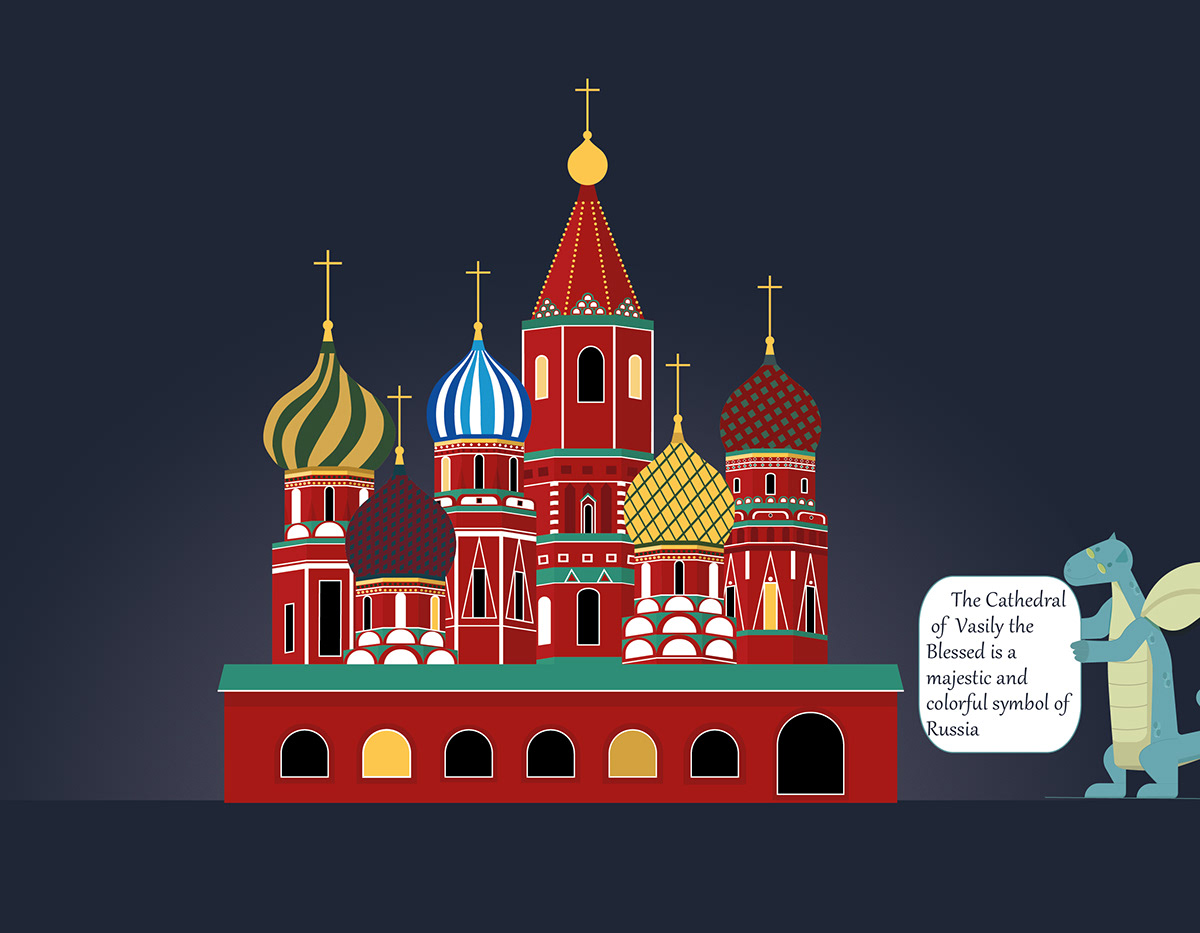
The cathedral looks like a fairy-tale guardian towering in the heart of Moscow. It`s unique architecture resembles a kaleidoscope of elegant forms and colors, inspiring with it`s mysterious beauty.
This multifaceted cathedral built in the 16th century, opens the pages of history before us. Behind each contour of its walls and every mosaic fragment, legends and destinies are concealed. Majestic domes and spires rise towards the heavens, like musical notes, singing to us the melody of ancient Russian culture.

Sushki, like sunlit rings, intertwine with the scent of freshness, inviting us on a festive culinary journey.The samovar is a true keeper of warmth and camaraderie, ignites our hearts with the aroma of tea.
Honey is sweet and golden like Russian autumn, invites us on a magical journey into the world of nature and taste. Thin and delicate, blini become an artistic canvas on which the mastery of Russian culinary art unfolds.
Caviar is bright and rich, in each little pearl encapsulates the taste of the sea and the shores of Russia. And vodka is a cheerful companion to toasts and celebrations, sparkles in glass goblets, reminding us that in the Russian feast, there is always a place for joy and gatherings. Each element is a part of the rich culinary heritage of Russia.

On the ice a couple spins, embodying the spirit of Russian winter and festive merriment. Their skates trace patterns on the ice, as if crafting the pages of an ancient manuscript.
Next to them is a rather unexpected guest a bear with a balalaika. Like a wandering musician, he adds his unique chord to this merry scene. His presence reminds us of the unexpected and beautiful aspects of Russian culture.
It is a living story of patterns, sounds of laughter, and music, where traditional costumes unlock the gates to the Russian folk soul.

Russia is a country where magnificent landscapes converge: majestic mountains, endless steppes and mysterious forests. With its rich history and cultural heritage, it becomes like an endless chest of mysteries and secrets.
There are the four seasons unfold like acts in a captivating natural theater, creating a unique kaleidoscope of views and impressions.
Russia is a country where the traditions of the past intertwine with the innovations of the future, leaving an indelible mark in people's hearts with its boundless beauty and spirit of adventure.
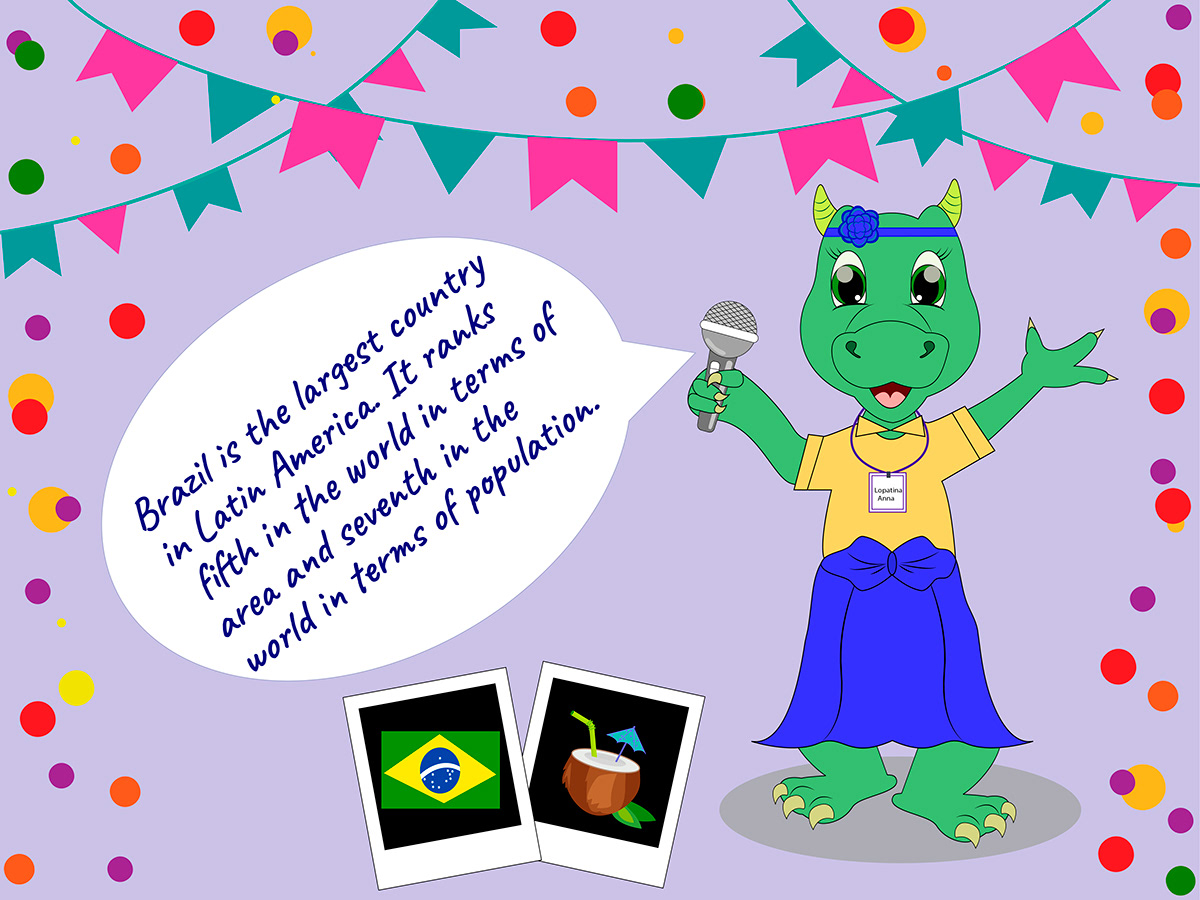
The other Anna decided to immerse herself in the mysterious world of Brazil, depicting vibrant carnivals, exotic nature, and the influence of diverse cultures.
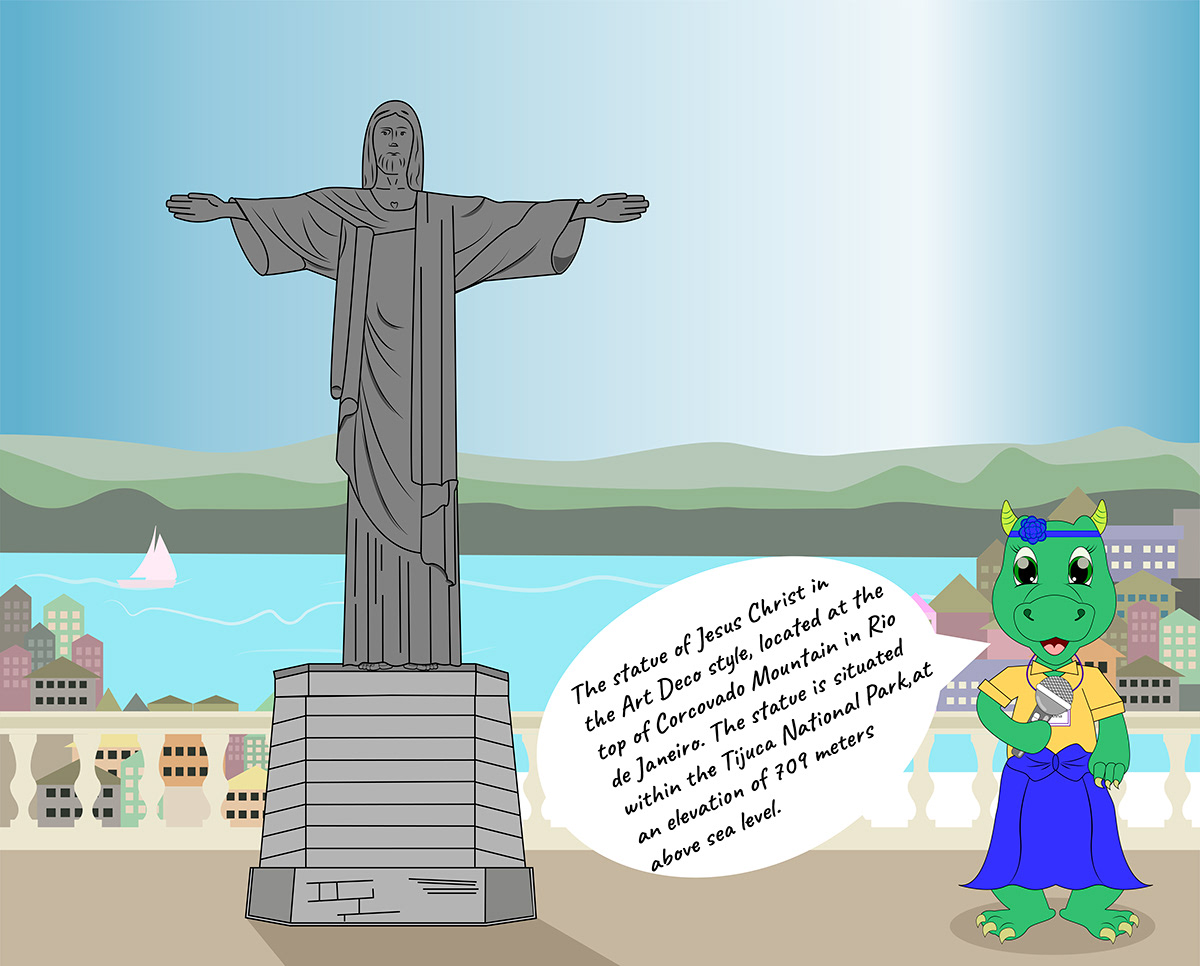
The statue of "Christ the Redeemer" in Brazil,created in 1931, inspires with its grandeur and spiritual awe. This colossal structure has become not only a religious symbol but also a part of Brazil's cultural heritage.
From the statue's vantage point, breathtaking views of Rio de Janeiro and the Atlantic Ocean unfold, attracting tourists with its majestic gaze. "Christ the Redeemer" embodies the symbolism of harmony between nature and humanity.

In Brazil, the realm of fauna is adorned with the vibrant presence of parrots and toucans. The colorful feathers of parrots create a true carnival in the air, rivaling the hues of the jungle.
Toucans, with their massive bills and bright plumage, become symbols of diversity, acrobats in the green canopies of trees. These exotic birds, enriching the Brazilian landscape with their splendor, orchestrate a tropical symphony of sounds and colors.
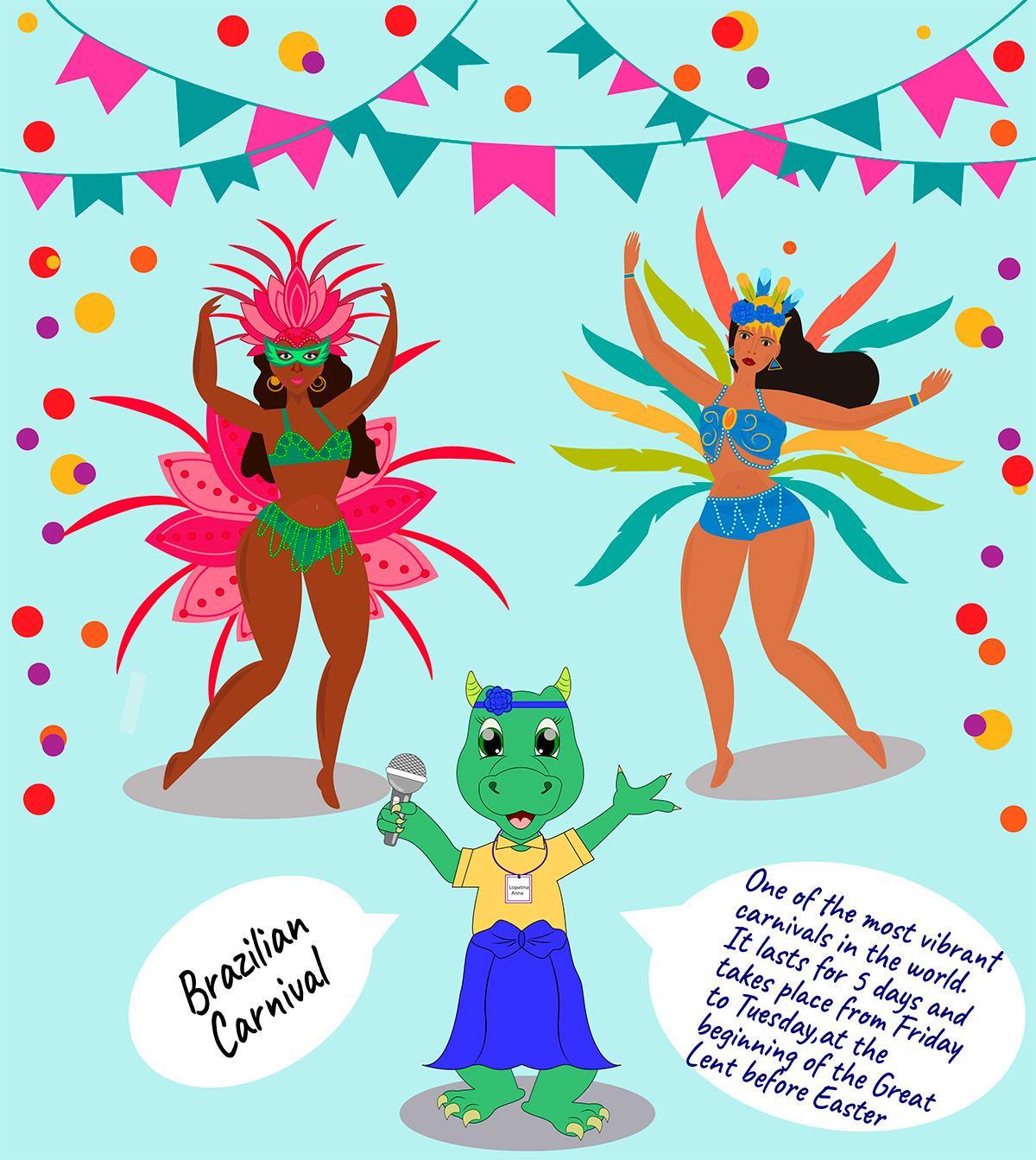
The Brazilian Carnival is a grand procession of colors and rhythms, the largest and most energetic in the world. Costumes in vibrant colors and feathers create amazing images of fairy-tale characters.
The infectious rhythms of samba fill the streets of Rio de Janeiro with a tropical atmosphere, making the carnival an unparalleled celebration and a showcase of the country's vibrant spirit.

Brazil is a country of carnivals and football, enveloped in joy and passion. There are the cultures of indigenous people, Africans, and colonizers blend into a harmonious whole.
Brazilian music, such as samba and bossa nova, fills the air with rhythm and energy. With the cascading waters of Iguaçu and the vast forests of the Amazon.
Brazil is a land of natural wonders and exotic beaches. This country is a vivid constellation of colors, where every moment is a celebration of life.

Julia fell in love with Eastern culture and chose Japan, aiming to convey the atmosphere of temples, the harmony of Eastern philosophy, and appetizing dishes.
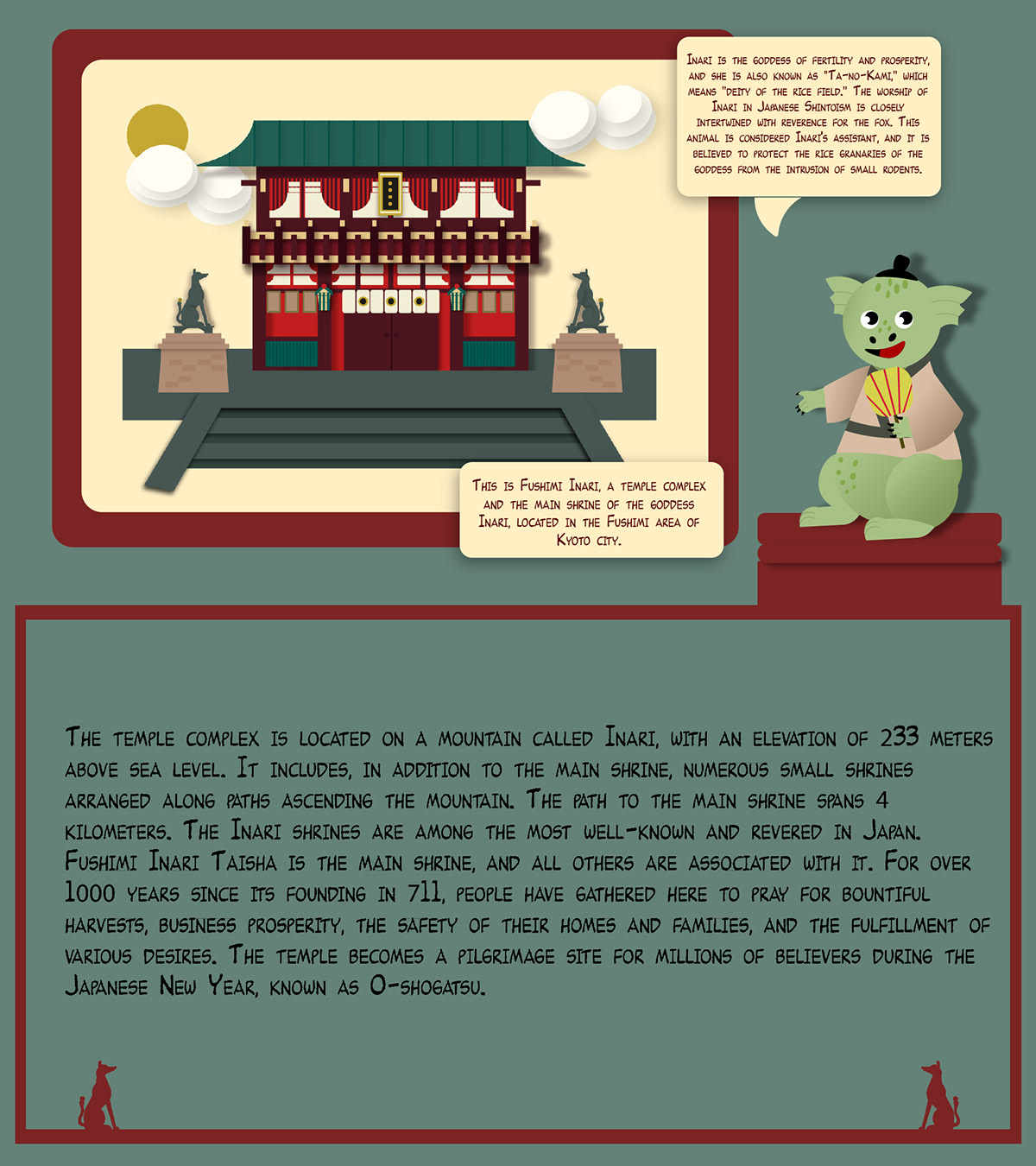

Many Japanese dishes, such as ramen, emerged in Japan at the turn of the 19th to 20th centuries and beyond. In Japan the term "Japanese cuisine" or "washoku" refers to traditional products that existed during the country's period of isolation and prior to the onset of modernization in 1868.
Rice is the primary ingredient in Japanese cuisine and forms the basis of the diet in Japan. It is prepared as a standalone dish and used as a component in the preparation of various "combined" dishes. One such dish is onigiri, also known as rice ball. Onigiri is a Japanese dish made from white rice, typically in a triangular or cylindrical shape, often wrapped in nori seaweed.
Equally popular are takoyaki, a Japanese snack in the shape of a ball, made from a wheat flour-based batter in a specially molded pan. It is usually consumed as a snack or between meals, but in some regions, it is served as a side dish with rice.
And for dessert, there's Taiyaki. Taiyaki is a Japanese fish-shaped pastry, commonly sold as street food. It mimics the shape of a red sea bream, in whose honor it is named. The most common filling is a sweetened red bean paste made from adzuki beans. Other common fillings include custard, chocolate, cheese, or sweet potato.

It is believed that tanuki are avid sake enthusiasts. Therefore, it is said that good sake cannot be made without their presence. They are revered not only as patrons of drinking establishments but also as guardians of commerce.
Mythology describes tanuki as good-natured spirits who enjoy indulging in drinks. But where did the image of tanuki come from, and is it truly a myth?
Tanuki are raccoon-like dogs belonging to the canine family, similar to wolves and foxes. Visually, they differ from raccoons with a shorter tail. In comparison to badgers, they lack stripes on their backs and have a shorter snout. Outside Japan, they are found in Manchuria and adjacent areas of Siberia.
In Japan, tanuki are widespread almost everywhere, except perhaps the southernmost islands. They consume anything edible they can find: vegetables, fruits, plants, seeds, insects, river fish, and small animals like frogs and lizards. They are known to raid the nests of ground-nesting birds.

Japan is a country of contrasts and harmony, where ancient traditions intertwine with cutting-edge technologies. It's a place where every stone, every curve of a tree, and every stroke of a character in kanji hold a millennium-long history.
In Japan, everyone will find something special: a traveler will be enchanted by the beauty of nature, a gourmet will savor exquisite dishes, and an explorer will undoubtedly discover something new and dear to the heart.
In the end, "Style Synthesis: Three Illustrators, Three Countries, One Amazing Case" became a unique project that brought together three different perspectives on the world. The case became a vibrant illustrative guide, allowing viewers to feel the unique characteristics of each country through the eyes of the illustrators. This project highlighted how powerful the language of art can be, uniting people from different corners of the world.




